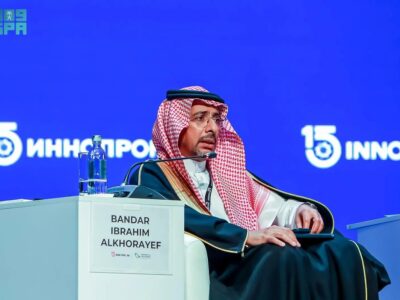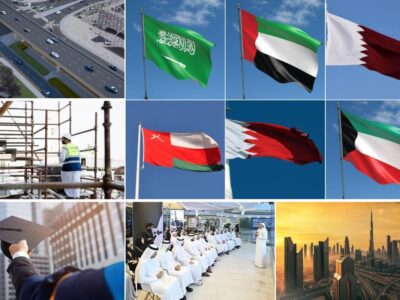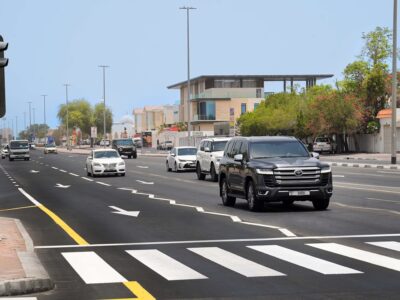Faisal Al Suwaidi, chairman and CEO of Qatargas, reveals how Qatar is monetizing the large amount of condensates extracted along with natural gas from the giant North Field reserves. Qatar’s Laffan Refinery is one of the world’s largest condensate refineries and was formally inaugurated in early April, in Ras Laffan Industrial City, 80km from Doha, Qatar, allowing the state of Qatar to consolidate its investments in the downstream sector.
Significantly, the refinery will process sufficient quantities of condensate to enable Qatar to meet all of its gas oil, LPG and Kerojet needs domestically for the first time, and move into export market as well.
“The initial concept of the Laffan Refinery began eight years ago when discussions were held about implementing measures to help diversify Qatar’s energy sector,” Faisal Al Suwaidi, chairman and CEO of Qatar gas, told Refining and Petrochemicals Middle East. “It was realised that it would be beneficial for the state of Qatar to capitalise on the synergies at Ras Laffan City created by the development of the North field,” he adds.
Construction of the US$900m refinery project was completed in July 2009 by a GS Engineering / Daewoo (GSDW) consortium (on a 62:38 share basis) from South Korea who had been awarded a lump sum engineering, procurement, supply, construction and commissioning (EPSCC) contract in April 2005.
The refinery will add value to the condensate produced by Qatargas and RasGas facilities. “Once the condensate arrives into the refinery, it is heated into furnace to over 300 degrees Celsius and then transferred to the distillation column where it is separated into products like LPG and Kerojet,” he explains.
The Laffan refinery has a process capacity of 146,000 barrels per stream day (bpsd) and uses the field condensates produced from the Qatargas and RasGas facilities. The production capacity of the refinery will be 52,000 bpsd of kerojet, 24,000 bpsd of gas oil, 9,000 bpsd of LPG and 61,000 bpsd of naphtha. “The naphtha will be used as a feedstock for the aromatic complex,” reveals Al Suwaidi.Qatargas operates the refinery on behalf of the shareholders which include Qatar Petroleum, Total, ExxonMobil, Cosmo, Idemitsu, Mitsui and Marubeni. “Due to Qatargas’s strong reputation in executing projects safely and on time, we were assigned the project management and operation of the refinery on behalf of the shareholders,” he adds.
Michael Corke, senior vice president at the Dubai based refining consultancy Purvin and Gertz says: “Laffan Refinery certainly makes strategic sense for Qatar to process some of its condensate at source and the economics of a well-executed project of this type should be positive.
Qatar currently produces 476,000 b/d of condensate, which will rise to 787,000 b/d by 2014, becoming the world’s largest condensate seller, producing 15-18% of global condensate exports. Al Troner, president of the Huston based Asia Pacific Energy Consulting (Apec) says: “Unlike Saudi Arabia, which is also ramping up production (together they will add more than 600 000 b/d output by 2013), Qatar doesn’t have enough crude to spike condensates into, so export is its only option,” he says.
What characterises the Laffan refinery is the fact that it only processes condensates. “Processing condensate in a specialized facility will give better margins than processing it in oil refinery,” says Corke.
Laffan Refinery consists of process units including utility systems, distillation units, naphtha and kerosene hydrotreaters, a hydrogen unit and a saturated gas plant producing naphtha, kerojet, gasoil and liquefied petroleum gas (LPG).
The refinery has been planned as an environmentally-friendly facility and built in line with stringent environmental standards to reflect this concept in every detail. “The refinery is designed for zero flaring during normal operations,” says Al Suwaidi. “In rare cases when there is excess flaring, the refinery has a recovery gas compressor which is designed to capture any excess gas and recycles it back into the refinery rather than it being released into the environment,” he adds. Taking the lead
Qatar’s next wave of condensate production this year will come from the two final LNG mega trains – Qatargas 6 led by ConocoPhillips, and Qatargas 7, led by Shell – due on stream by the year end. Each will produce 42,000b/d of condensate. At the beginning of 2011 Shell will start producing 65,000 b/d condensates and 36,000 b/d LPG from the gas feedstock for its $19bn gas-to-liquids (GTL) plant, which is being commissioned.
To utilise the condensates coming from these projects, Qatar is building a second 146,000 b/d condensate splitter at Ras Laffan for 2015 start up. “We expect to award the front end, engineering and design (FEED) contract for the expansion project in the coming few weeks,” Al-Suwaidi says. “The new expansion project will double the capacity of the refinery to 296,000bpd by 2015,” he adds.
Energy minister Abdullah Al-Attiyah, says the second Ras Laffan splitter will allow Qatar to become a net exporter of diesel, instead of an importer.
Al Attiyah said Qatar will target Asia and Europe with the splitter products, “Markets across Southeast Asia and Europe in particular rely on these commercially valuable products for their petrochemical industry and to run their vehicles and jets,” Al Attiyah says.
Qatar’s large condensate output is often forgotten, but the light liquid is allowing the state of Qatar to remain rather immune to global gas price fluctuations, while at the same time not being included in OPEC production quotas, giving it something of a central role in Qatar’s new energy mix, and in its 2030 vision.







